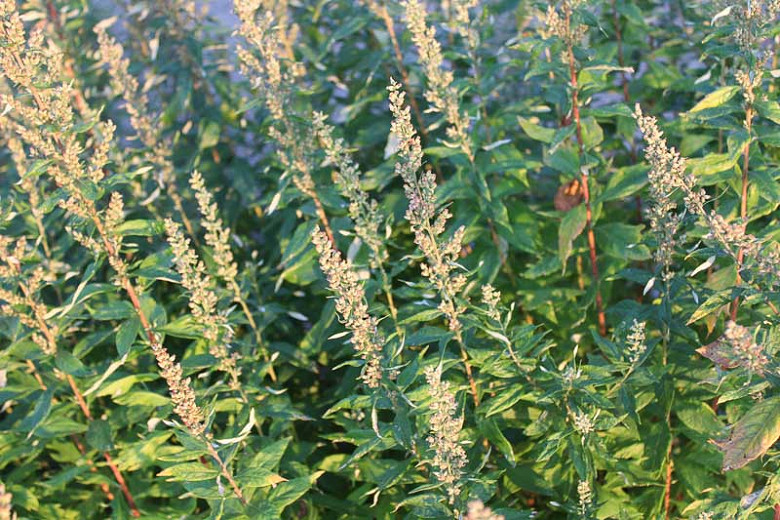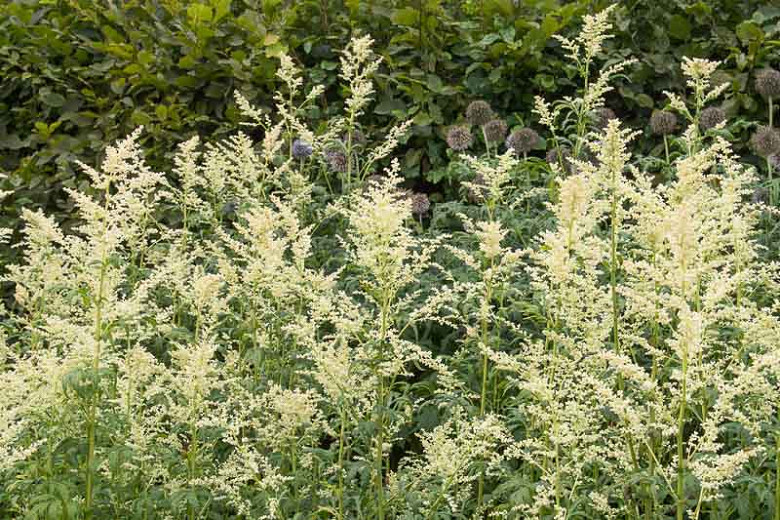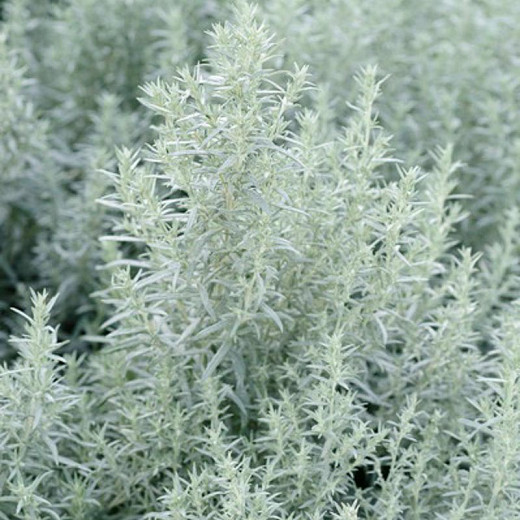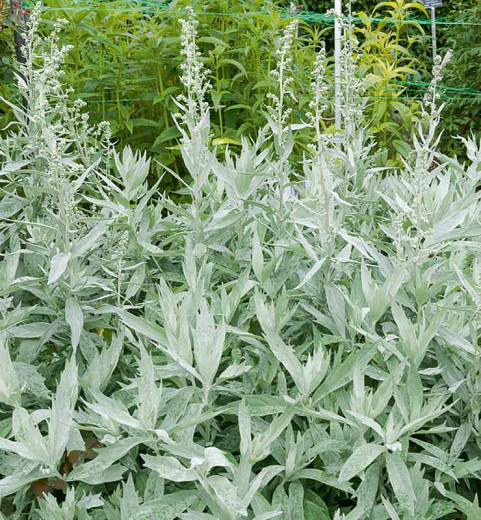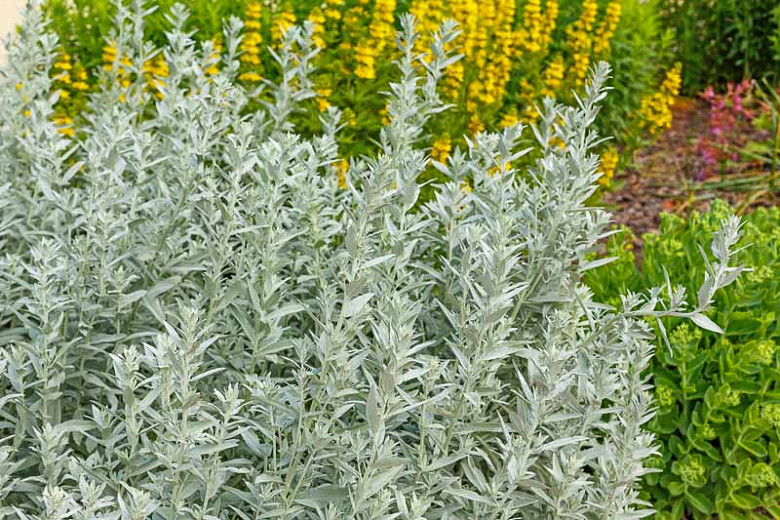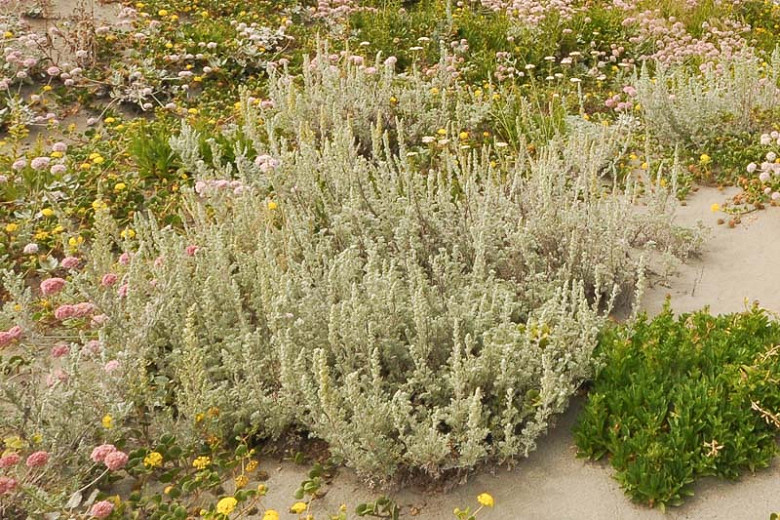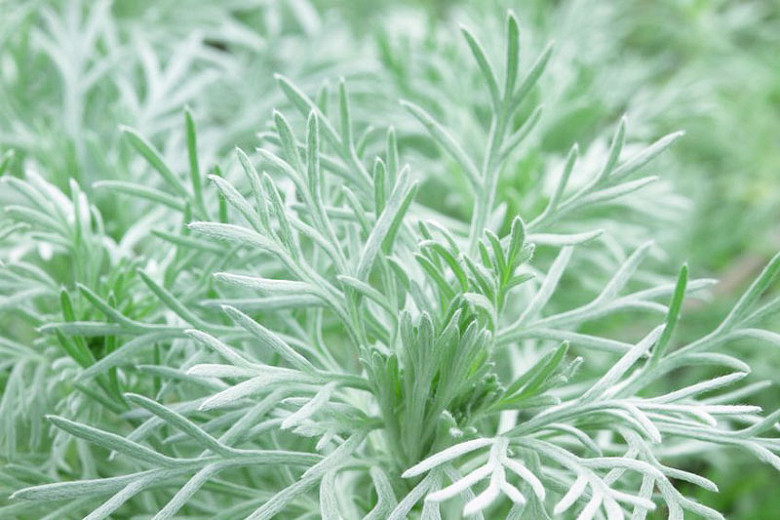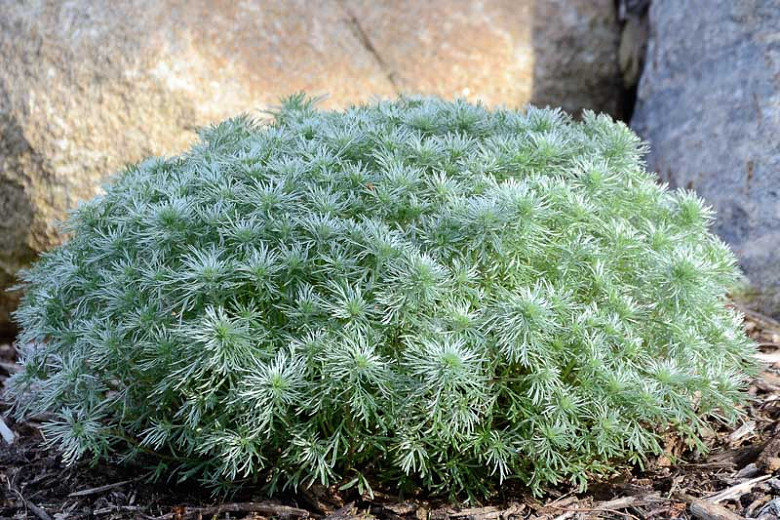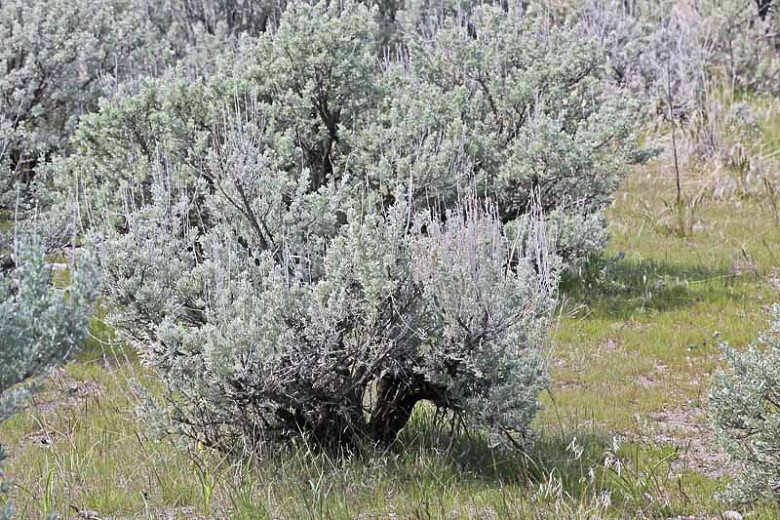Artemisia douglasiana (Douglas Mugwort)
Fast-growing, Artemisia douglasiana (Douglas Mugwort) is an aromatic perennial or sub-shrub forming a bushy clump of erect stems covered with narrowly elliptic leaves, 3-6 in. long (7-15 cm), with 3-5 lateral lobes. Green on the upper surface, the foliage is silvery-white underneath and soft and aromatic to the touch. Attractive to bees, flies and butterflies, erect plumes of tiny, yellow-gray flowers appear in summer, but they have little ornamental value. Native to the western United States and into Baja California, Douglas Mugwort is found primarily in drainages and riparian corridors. It also occurs naturally around freshwater marshes and in moist meadows. Spreading by underground rhizomes, particularly in damp areas, Douglas Mugwort is useful in restoration projects and for erosion control. It is also a reliable groundcover for shady spots. Used as a ceremonial plant in many Native American cultures, Douglas Mugwort is highly esteemed by many California tribes for its many medicinal applications.
- Grows up to 3-5 ft. tall (90-150 cm) and 3-4 ft. wide (90-120 cm). This plant may become weedy or invasive in some regions or habitats if not properly managed.
- Prefers sun and moist soils, but tolerates shady areas and dry soils. This plant is tolerant of a range of soil types, as long as excellent soil drainage is provided.
- Generally pest and disease free. Deer resistant.
- Cut back to base of plant in autumn.
- Use soil barriers to help contain the rhizomatous spread.
- Propagated from rhizome cuttings.
- Native to the Western United States in California and areas of Idaho, Nevada, Oregon, and Washington; and in northwestern Baja California, Mexico.
Requirements
| Hardiness | 6 – 10 |
|---|---|
| Climate Zones | 1, 1A, 1B, 2, 2A, 2B, 3, 3A, 3B, 4, 5, 6, 7, 8, 9, 10, 14, 15, 16, 17, 18, 19, 20, 21, 22, 23, 24 |
| Plant Type | Perennials, Shrubs |
| Plant Family | Artemisia |
| Exposure | Full Sun, Partial Sun, Shade |
| Season of Interest | Spring (Early,Mid,Late)Summer (Early,Mid,Late) |
| Height | 3' – 5' (90cm – 150cm) |
| Spread | 3' – 4' (90cm – 120cm) |
| Spacing | 36″ – 48″ (90cm – 120cm) |
| Water Needs | Low, Average |
| Maintenance | Average |
| Soil Type | Chalk, Loam, Sand |
| Soil pH | Acid, Alkaline, Neutral |
| Soil Drainage | Moist but Well-Drained, Well-Drained |
| Characteristics | Fragrant, Showy |
| Native Plants | United States, California, Pacific Northwest, Idaho, Oregon, Washington, Southwest, Nevada |
| Tolerance | Deer |
| Attracts | Bees, Birds, Butterflies |
| Garden Uses | Ground Covers |
| Garden Styles | Informal and Cottage, Prairie and Meadow |
